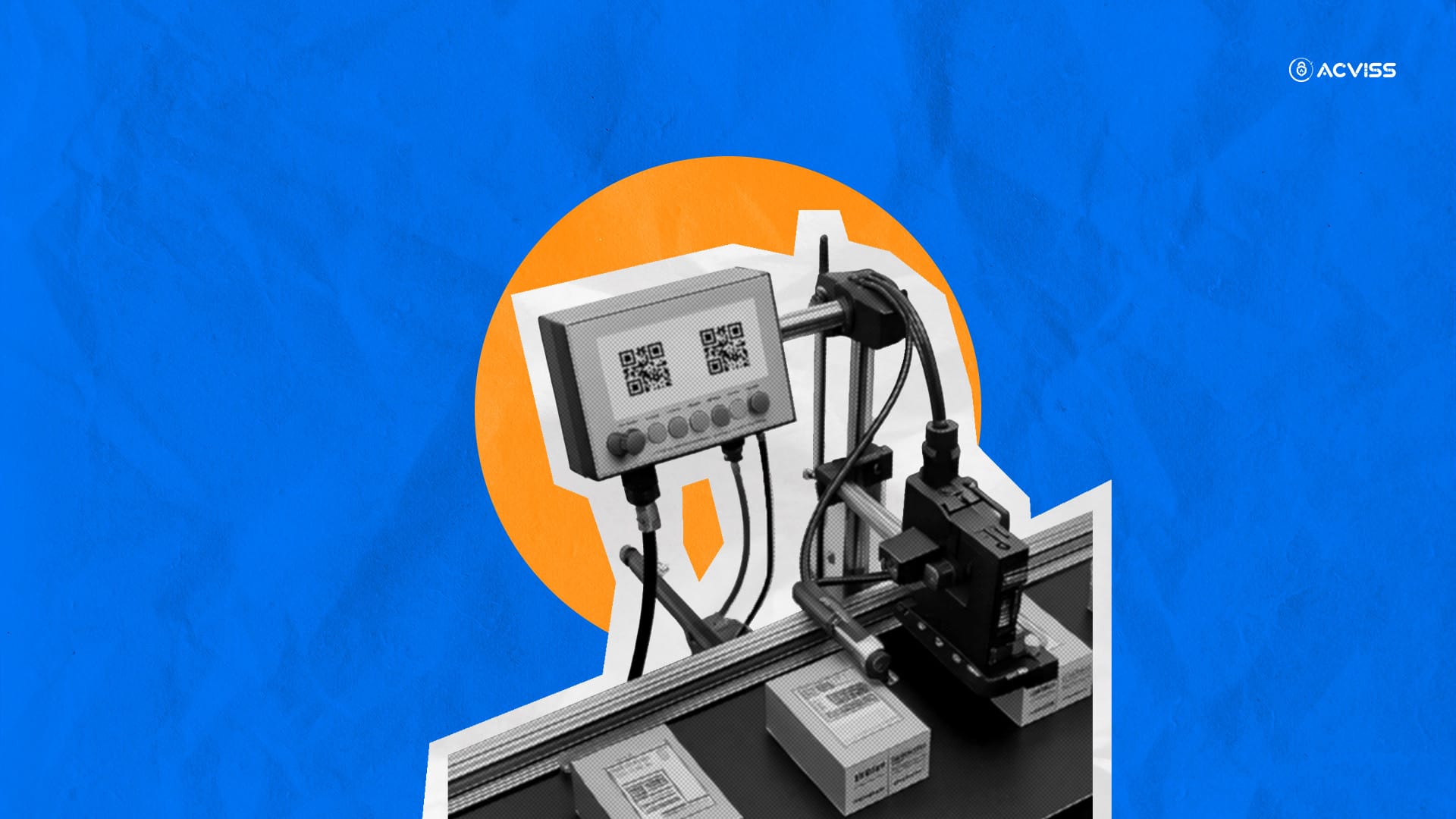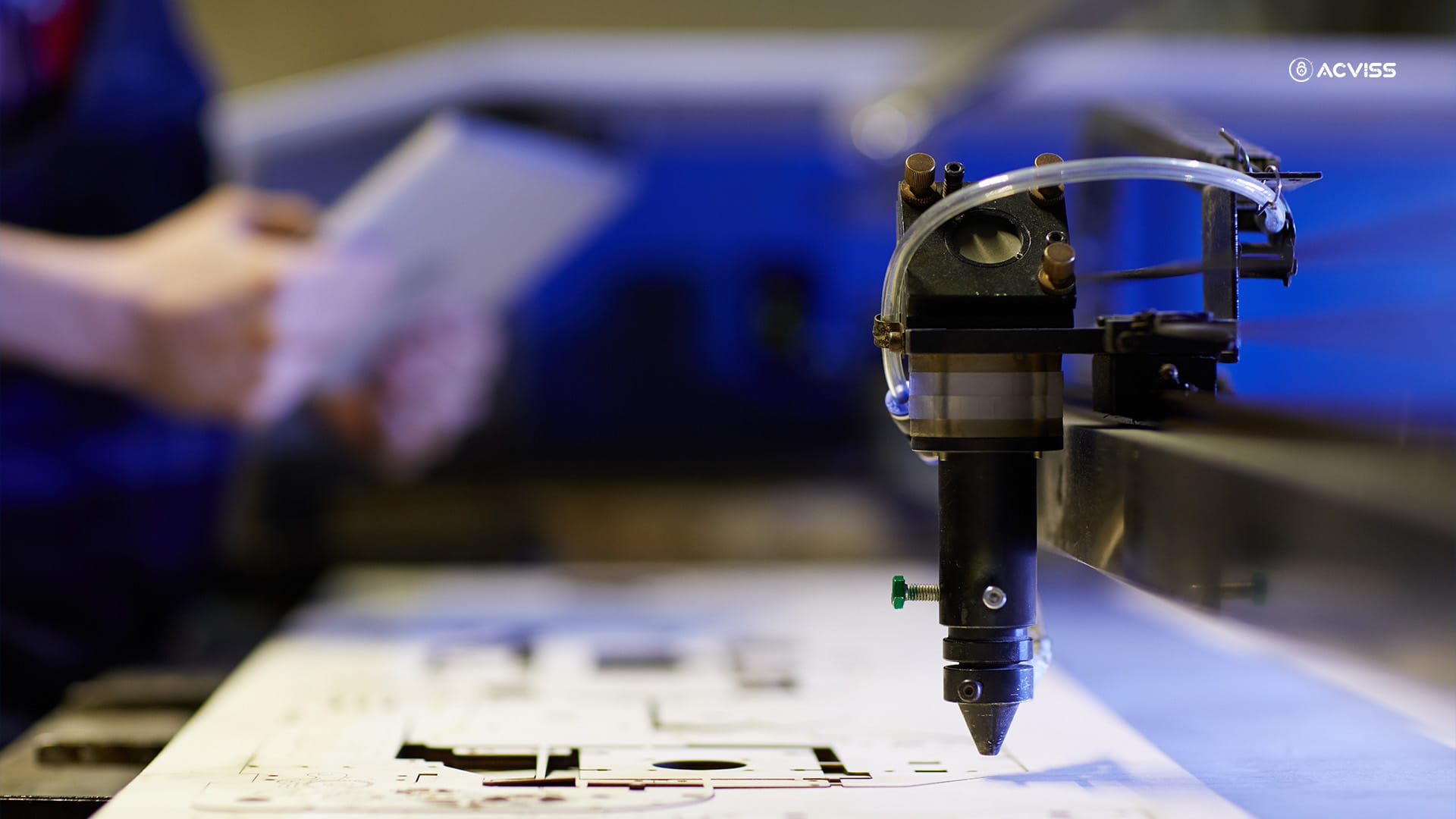Key Technologies Driving Shopfloor Inline Printing: What You Need to Know

Inline printing technology has gradually become a go-to tool for multiple businesses, especially in the manufacturing industry. It allows companies to print directly on products or packaging without the need to pause the production process.
Real-time printing makes it easy to print product labels, barcodes, or batch numbers while keeping production fast and accurate. As manufacturing becomes smarter, technologies like thermal inkjet (TIJ), laser printing, and continuous inkjet (CIJ) are gaining popularity.
This article explores the key inline printing technologies, their advantages, and disadvantages. Here, we’ll also offer tips on choosing the right one for your business.
But, for that you need to do just one thing: keep reading.
Key Technologies Driving Shopfloor Inline Printing
1. Thermal Inkjet Printing (TIJ)
Thermal inkjet printing (TIJ) is a quite popular method that is used for inline printing on shop floors. It is preferred because it delivers clear, high-quality prints and is very dependable. It works by heating the ink to create a bubble, which pushes small droplets out through a nozzle to print on the surface. TIJ is well-known for its accuracy and works well on different materials like cardboard, paper, plastics, and even metals.
What Are Main Advantages:
- High-Quality Prints: Thermal inkjet printing can print very clear pictures and words, up to 600 dots per inch (dpi). It is great for barcodes, product details, and MFG & EXP dates.
- Affordable: Many are choosing TIJ, just because it doesn’t cost much for maintenance. And, its ink cartridges are easy to use.
- Works Faster: TIJ works well in places where things are made quickly. It prints sharp and clean pictures without taking too much time.
Used By: TIJ is perfect for industries like medicine, food, and drink packaging. The reason is that they need to print clearly and accurately, otherwise they might lose their customers.
2. Laser Printing (LP)
Laser printing uses strong light beams to carve, mark, or print information on a product’s surface without touching it. This method is suitable for materials like glass, plastic, and metal. The marks made by laser printing last a long time. It doesn’t fade easily like others, even in tough conditions. This makes it a good choice for companies that need to stay clear for a long time.
What Are Main Advantages:
- Highly Durable: Laser-printed marks are one of the best when it comes to durability. It doesn’t get damaged by scratching, chemicals, or high heat.
- No Ink Cartridges Needed: Laser printing systems don’t need ink cartridges. This feature is best for budget-friendly businesses as it saves money.
- Eco-friendly: Laser printing doesn’t create waste or pollution from ink, which is good for the environment.
Used By: Laser printing is mostly used in industries like electronics, aeroplane building, and automotive.
3. Continuous Inkjet Printing (CIJ)
Continuous inkjet (CIJ) printing is a very flexible type of printing. It basically works by shooting tiny ink droplets from a nozzle and sending unused ink back into the system. CIJ can print on many types of surfaces, including curved ones.
What Are Main Advantages:
- High-Speed Printing: Continuous inkjet printers can work very fast compared to others. It prints over 1,000 characters every second.
- Versatility and Flexibility: CIJ’s versatility and flexibility make it stand out among others. It can print on many surfaces like glass, metal, plastic, etc.
- Non-stop Printing: CIJ can keep printing without stopping to get repairs. This quality makes it the best as it saves huge time.
Used By: A continuous inkjet printing system is great for manufacturers who need to print codes, logos, and other information quickly in busy production lines.
The Evolution of Inline Printing: Hardware and Software

The inline printing technique has come a long way. With long steps in both hardware and software, it now offers great accuracy, design, speed, and efficiency. In the initial days, inline printers were big and bulky machines that needed a lot of hands-on attention. Now, machines are quite smaller and faster, which can easily fit into shopfloor areas with little interruption.
Hardware:
If we talk about the hardware side, modern printers are smaller, use less energy, and can print faster with top-quality results. They have better printheads, ink cartridge systems, stronger inks, and smarter controls. It helps them work well on different types of materials.
Software:
On the software side, printers can now connect with manufacturing and business management systems or Manufacturing Execution Systems (MES) and Enterprise Resource Planning(ERP). This helps manage printing tasks more easily. Printers can automatically adjust their work based on real-time production data, which reduces mistakes and waste while speeding up the process.
Selecting the Right Inline Printing Technology For Your Shopfloor
Having the right inline printing technology in your shopfloor operations is very crucial. And picking one depends on a few things, like the type of products you make, how fast you need to produce them, and the conditions in your work environment.
Below are a few factors that need to be kept in mind while choosing:
- Substrate Type: If you want to print on different materials like plastic, metal, or cardboard, CIJ printers are a good choice because they work on many surfaces. For accuracy and long-lasting prints, laser printers are more suitable.
- Production Speed: For fast production lines, CIJ printers are a good choice. The reason is that they can keep up without losing quality. TIJ printers can also work with fast lines but are better for tasks that need very detailed and high-quality prints.
- Durability of Prints: If you need long-lasting and permanent marks, such as those needed in the automotive or electronics industries, you should use laser printers.
- Maintenance and Costs: Laser printers save money on ink and supplies. However, they are expensive to buy at first. TIJ printers are usually cheaper to start with and need less maintenance.
The Future of Inline Printing: Trends to Watch in 2024 and Beyond
Inline is changing quickly due to technology advancements, automation, and efforts to be more eco-friendly. In 2024 and beyond, key trends like using AI, IoT, and eco-friendly practices are transforming the future of the industry.
Let’s look at these important trends and the facts behind them.
Advancements in Inline Printing Technology
The global digital printing market is expected to grow from $25.74 billion in 2019 to $35.71 billion in 2028. This will happen because of new high-speed inkjet and hybrid printing systems. They help produce more in less time while keeping the quality high.
Single-pass inkjet technology is one of the biggest improvements. It speeds up production while making sure the prints stay clear. This is particularly useful for industries like packaging and textiles, where speed and accuracy are key.
IoT and AI Integration for Automation
The use of IoT and AI in printing is changing how machines work by making them more automated. IoT sensors basically watch things like machine performance, ink levels, and paper quality in real-time. It helps to predict when maintenance is needed. As per reports, companies using these technologies save 10 to 20% on costs. AI systems help in smoother operation and less waste. The market for AI and IoT in printing is expected to grow by 12.7% by 2030.
Eco-Friendly Solutions
Being sustainable is important for any business, especially in the printing industry. That’s why, more companies are using inks like water-based and UV-curved inks, which produce fewer harmful chemicals and make the printing process cleaner. Apart from that, businesses are also focusing on using recyclable packaging and reducing waste. It helps them meet global environmental goals like the UN’s Sustainable Development Goals.
How to Integrate Inline with Your Existing Manufacturing Systems

Follow the steps to integrate the inline printing system with your existing manufacturing:
Step 1: Check Compatibility
First, make sure your printers are compatible with your older systems, like ERP and MES. Modern printers typically have easy ways to connect.
Step 2: Make a Plan
Work with your IT and operation teams to create a plan for how the printing will work. Check if it will be automatic or manual?
Step 3: Set Up Connections
Most printers use Ethernet or Wi-Fi to talk to the other systems. So, make sure your printer is connected to the network your shopfloor has.
Step 4: Test and Fix Issues
Run multiple tests just to check if the printer is working properly and solve any problems like wrong data or connection issues or not.
Step 5: Train Staff Personnel
Finally, train your workers on how to use the new system. Learning how to fix any issues that might come up is important.
Common Challenges and Solutions
There are some common challenges with integrating new systems. It includes connecting devices, data not working together, and system overloads. To solve these problems easily:
System Compatibility | Make sure your printer and software are compatible to work with your vendors |
|---|---|
Automate Data Management | Connect your ERP, MES, and printers with automatic data sharing. It will reduce the chance of errors made by people |
Monitor Performance | Keep an eye on how your printing systems are working. Ensure it is able to catch and solve issues quickly. |
The Right Approach
Technologies like TIJ, CIJ, and laser printing are completely transforming the way manufacturers handle product labelling, tracking, and packaging. TIJ provides high-quality prints, CIJ works well with fast production lines, and laser printing offers permanent markings. Each of them offers unique benefits for different industries and requirements.
As manufacturing evolves, using these technologies in combination with IoT and AI will make processes more efficient, reduce errors, and support eco-friendliness.
Overall, with the right approach, companies can definitely ease the way they’re doing shopfloor operations and create new growth opportunities.
Interested to learn more about inline printing and strengthening your supply chain traceability game? Get in touch with us and join the rank of global leaders in the fight against counterfeits and for a sustained growth.
